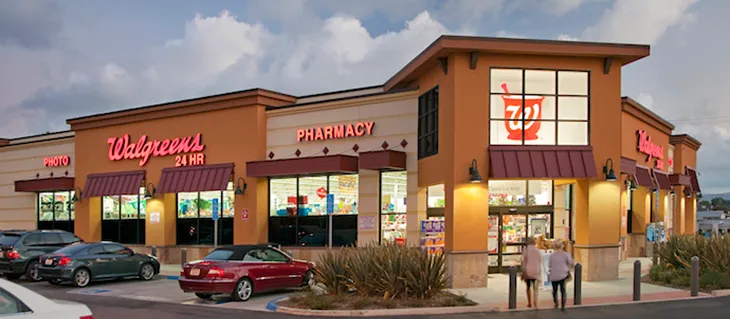New, exciting trends are emerging in community pharmacy practice, but what’s past is still prologue. Sal D’Angelo, a past president of the National Community Pharmacists Association/National Association of Retail Druggists, was the first person I heard say, “Get into politics or get out of pharmacy.” Sal spoke those words a long time ago, and he had been saying them for a while by the time I first heard them. Lots in pharmacy — and in life — may have changed since then, but the words still ring true. Pharmacists can either play the political game or find themselves gamed by politics.

Doug Hoey
To their credit, independent community pharmacists seem to be more involved in politics now than ever before, and it’s paying off. NCPA’s priority is to change the pharmacy payment model to one that is simple, transparent and fair for community pharmacies and the patients they serve. Driving home that point, at NCPA’s Annual Convention in October I was able to ask Lina Khan, the chair of the Federal Trade Commission and one of our keynote speakers, what really got the FTC interested in looking into pharmacy benefit managers. While not a new subject at the commission, she said, it was the overwhelming response the FTC received when it asked for examples of unfair competition that further sparked interest. She specifically mentioned the 24,000 comments the FTC received from independent pharmacists, as well as patient advocates and physicians who also expressed concerns about PBM anticompetitive behavior. NCPA strongly encouraged its members to share their stories about how PBM business practices are affecting their business and especially their patients, resulting in thousands of comments and contributing to the FTC’s vote in favor of a 6(b) study.
Of course, this study doesn’t necessarily clinch the victory. But it’s a long time coming — and it’s a very big deal. As the FTC continues digging into the industry and anticompetitive business practices, it is pursuing documents and information from PBMs and focusing on areas of great importance to community pharmacists such as “complicated and opaque methods to determine pharmacy reimbursement.” It can also keep hearing from pharmacy about what we and our patients have been and are still experiencing at the hands of these mega-middlemen.
Might the FTC be interested in the recent development where Express Scripts eliminated the option for Tricare beneficiaries to obtain prescriptions at their pharmacy of choice by cutting 15,000 independent pharmacies from the 2023 retail pharmacy network, seemingly to funnel beneficiaries into its own mail-order program? We’d think so.
The FTC’s 6(b) study is something like playing the long game … which brings me to pharmacy direct and indirect remuneration fees.
After years of fighting for pharmacy DIR fee reform, this time next year, barring something unforeseen, independent pharmacy owners and their teams will be preparing for up-front transparency and knowing what their lowest possible reimbursement is at point of sale. This is a fight NCPA has been leading for close to a decade, and some progress was made with the help of pharmacy champions in Congress, but there is still more work to do. It will be vital for pharmacists to have the right tools to navigate and be ready for upcoming DIR changes. I have no doubt the PBMs are preparing. We’ll be watching closely to see how the rule is implemented and whether PBMs comply or try to game the system. If they don’t comply, NCPA reserves the right to take back up our litigation filed against the Department of Health and Human Services in 2021 in pursuit of a fix.
As part of preparing, pharmacists must be using tools and data and taking proactive steps to be profitable so they can continue to be there for their patients. Pharmacy deserts are on the rise, and NCPA and the University of Southern California have collaborated on a new interactive mapping tool that could promote health equity by identifying pharmacy shortage areas in the United States. Despite 90% of Americans living within five miles of a pharmacy, the mapping tool shows nearly one in four neighborhoods nationwide are pharmacy shortage areas — areas that have no pharmacy. Millions of Americans may live within what appears to be a modest distance to a pharmacy, but they don’t have a car or access to public transportation, which severely limits their access to pharmacies in the area.
Paying cash is a trend that continues to grow, as high-deductible plans and PBM profiteering often make it more attractive for consumers to just pay cash. The most popular prescription “discount cards” are in cahoots with the PBMs — often driving higher prices for consumers and financial losses to the pharmacy — and are not the solution. Payers, consumers and community pharmacists are seeking solutions beyond most traditional cash discount cards operated by third parties. Prescryptive’s myRx AI Pricing system, for example, can make independent pharmacies immediately more competitive by giving them access to cash pricing optimization driven by artificial intelligence. We’re recommending it to NCPA member pharmacies so they can utilize cutting-edge technology to stay competitive while also continuing to do what they do best: taking care of their patients.
Perhaps one of the biggest trends emerging from the pandemic is consumer acceptance of pharmacists providing primary care services. There is a looming primary care crisis in the U.S. as fewer physicians opt to go into that area. Community pharmacists proved their mettle throughout the pandemic by providing primary care services like point-of-care testing, immunizations and answers to questions about basic ailments, especially during the period when most physician offices and emergency rooms were closed or limiting patients. Many chains are making strategic investments in trying to turn their pharmacy locations into primary care sites. The CPESN USA national network of pharmacies is one way community pharmacists are preparing for the growth of pharmacy-based primary care services. NCPA cofounded CPESN with Community Care of North Carolina to help pharmacies develop local care networks, demonstrating value by coordinating patient care with broader care teams to help ensure quality and control costs. The network of 3,300+ community pharmacies is clinically integrated, allowing community pharmacies to approach plan sponsors to negotiate value-based programs and payment for providing enhanced services.
Pharmacy practice has been put to the test during the pandemic and has excelled with flying colors. Though we’ve long known all that we’re capable of, patients, members of the press and policy makers have been blown away by what pharmacy teams have accomplished.
We can’t stop there.
Around August, with midterm elections on the horizon, NCPA members completed over 60 pharmacy visits with policy makers or their staff, giving firsthand insight into the important role independent pharmacies play in their communities, the many ways we help patients and the challenges facing the industry. Twenty-two of these were with legislators who serve in leadership or on key committees for community pharmacy, including Sen. Ron Wyden (D., Ore.) and Rep. Cathy McMorris Rodgers (R., Wash.). Centers for Medicare and Medicaid Services administrator Chiquita Brooks-LaSure visited a community pharmacy as well. Nearly 40% of pharmacies participating in this initiative hosted a legislator for their first time, an important step in building rapport with those making decisions central to the future of pharmacy.
What pharmacists and their staff do day to day is important. Educating policy makers and their teams about community pharmacy is also important in protecting the profession from being gamed by politics.
Continuing the trend of 2020 and 2021, 2022 was a monumental year for independent pharmacy. Looking forward, it seems we may have another big year ahead of us, too. If you’re reading this column and haven’t already done so, please get involved in the political game. Sal would be proud of you.
B. Douglas Hoey is chief executive officer of the National Community Pharmacists Association.









